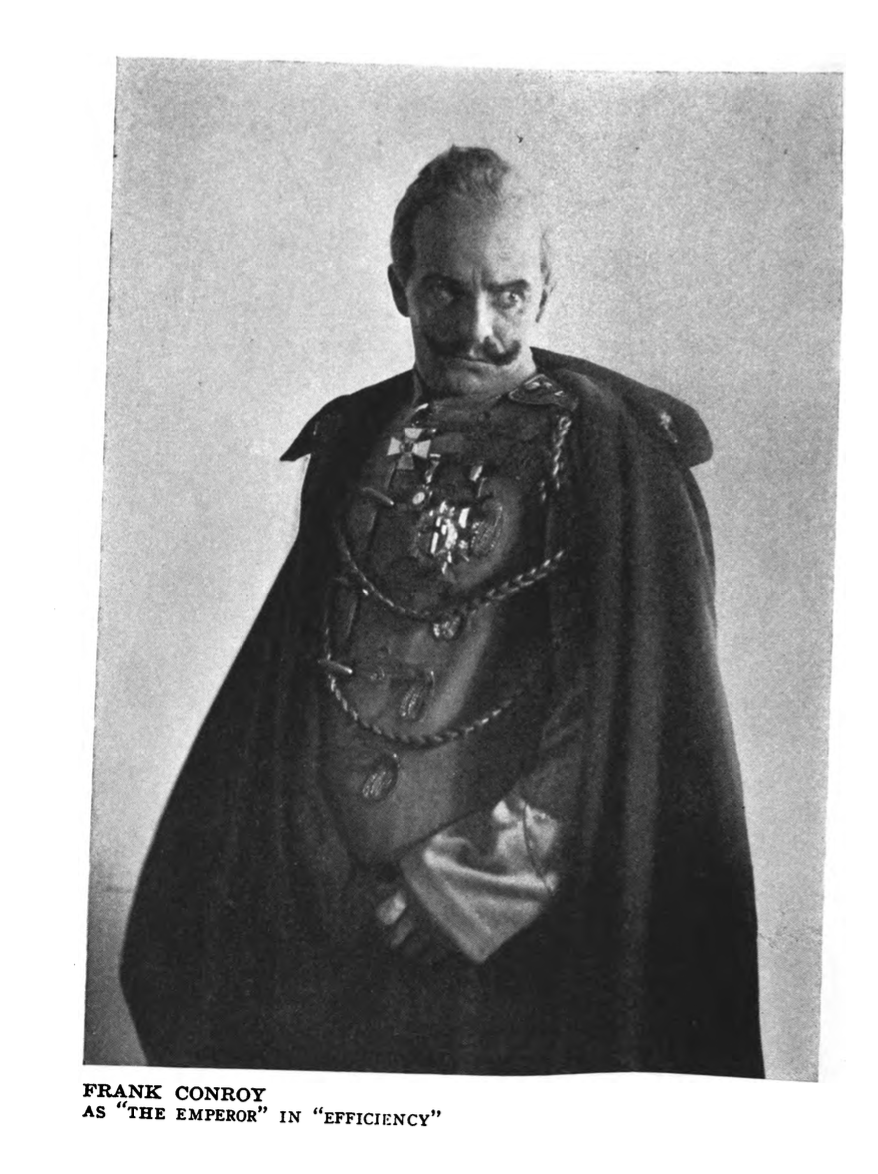BLOOD AND IRON (1)
By:
November 11, 2023

“Blood and Iron: A Play in One Act,” A Radium Age proto-sf ancestor of The Six Million Dollar Man and RoboCop, was first published in the December 1917 issue of The Strand. (Note that the play predates Karel Čapek’s “R.U.R.: Rossum’s Universal Robots” by four years.) HiLoBooks is pleased to serialize it here for HILOBROW’s readers.
ALL INSTALLMENTS: 1 | 2 | 3 | 4 | 5 | 6 | 7 | 8.
Cast of Characters.
THE EMPEROR.
THE SCIENTIST.
NUMBER 241.
THE EMPEROR: A person attired in military costume, indicating the highest order of elaborate modern mode, sage green in tone. He wears a short, olive-coloured cape coat, the left flap of which is thrown back disclosing : (1) the Order of Merit; (2) the Triple Cross; (3) a seven-starred emblem of diamonds, emeralds, and rubies, known as the Reward of Heaven, designed by the Emperor himself and bestowed by the grace of the Almighty upon His Majesty’s Imperial person.
THE SCIENTIST: A small, thin man, garbed in frock-suit, flowing black tie; thin of face; bulging eyes; horn spectacles; heavy head of grey hair; thin, straggly, grey beard and small moustache. He is very animated. He wears a long, Inverness style dark overcoat, and carries a portfolio containing reports and statistical matter.
NUMBER 241: Stands six feet; is very erect and stiff of posture; closely-cropped hair; large face, rather heavy of expression. Upon entering he is garbed in full-length war-grey cloak, with wide band at waist buttoned in front; the conventional metal war-helmet now in general use; hands in white cotton gloves. He moves with the deliberation of an automaton. In reality he is fifty per cent. human and fifty per cent. machine, being composed of: (1) left artificial leg; (2) two artificial hands; (3) artificial right forearm and elbow; (4) artificial left eye, which SCIENTIST has converted into a telescope; (5) artificial left ear, which is also a telephone; (6) all his teeth are metal — synthetic gold — but cheaper and harder. He can bite barbed wire in twain. Underneath his great cloak he wears the regulation infantry uniform and a bayonet in a scabbard. His speech is laboured.
SCENE: Private audience chamber of an Emperor, in purple and gold, with magnificent throne-chair carved elaborately, a canopy extending over the seat. Regal flat-top table left-centre containing mounted figure of THE EMPEROR in bronze and a large mushroom gold gong. A purple-and-gold cloth falls over both ends of the table. The cloth is decorated with crown and sceptre. Heavy purple curtains fall from back wall. A modern rifle leans against the left back corner.
(At rise of curtain stage empty. ENTER the EMPEROR, followed by the SCIENTIST — the EMPEROR with a curt and preoccupied air, the SCIENTIST with an air of fawning enthusiasm.)
EMPEROR (crossing toward throne-chair, in which he seats himself): Proceed! Proceed!
SCIENTIST (placing portfolio on table and smilingly rubbing his hands): Modesty, Sire, causes me to falter.
RADIUM AGE PROTO-SF: “Radium Age” is Josh Glenn’s name for the nascent sf genre’s c. 1900–1935 era, a period which saw the discovery of radioactivity, i.e., the revelation that matter itself is constantly in movement — a fitting metaphor for the first decades of the 20th century, during which old scientific, religious, political, and social certainties were shattered. More info here.
SERIALIZED BY HILOBOOKS: James Parker’s Cocky the Fox | Annalee Newitz’s “The Great Oxygen Race” | Matthew Battles’s “Imago” | & many more original and reissued novels and stories.
